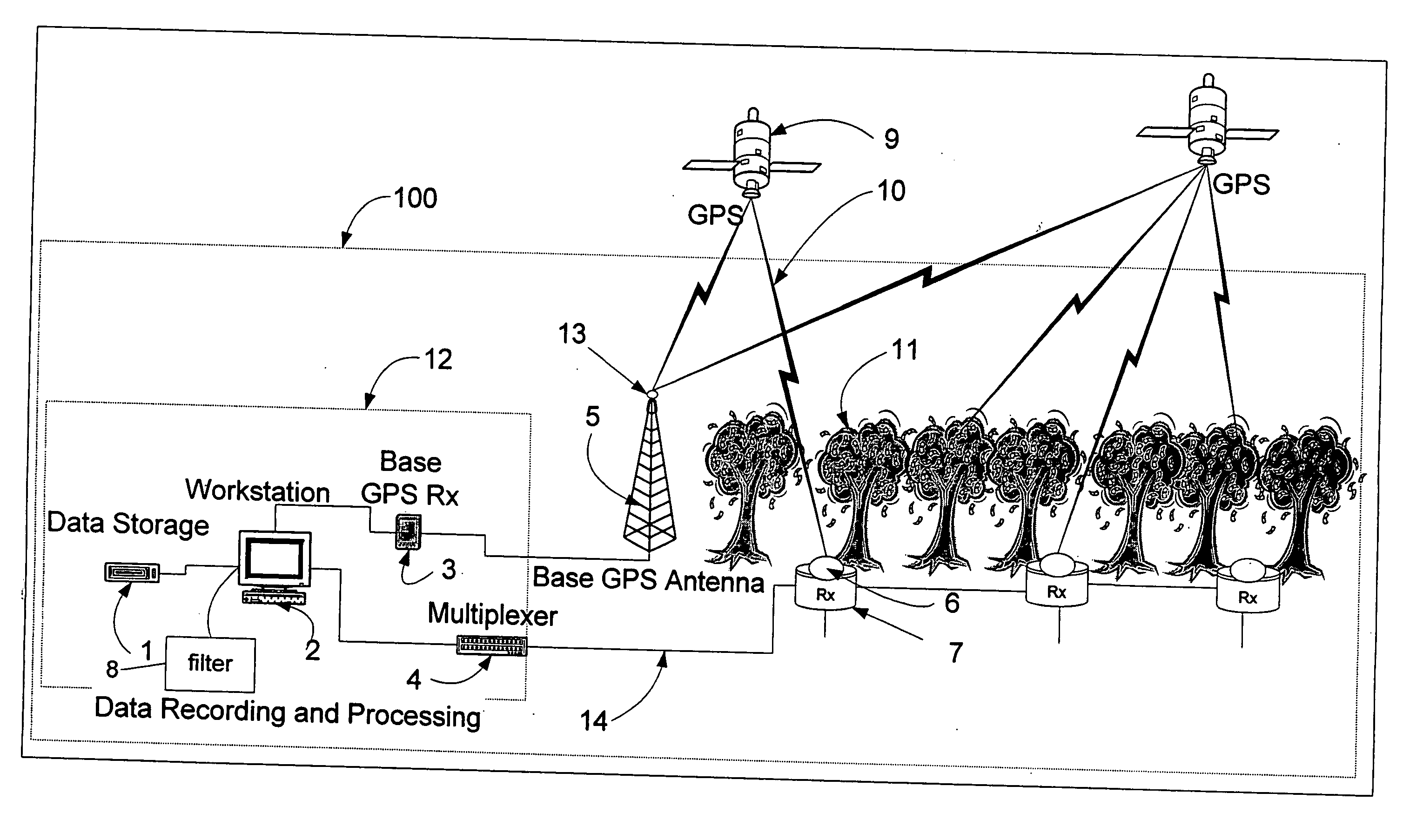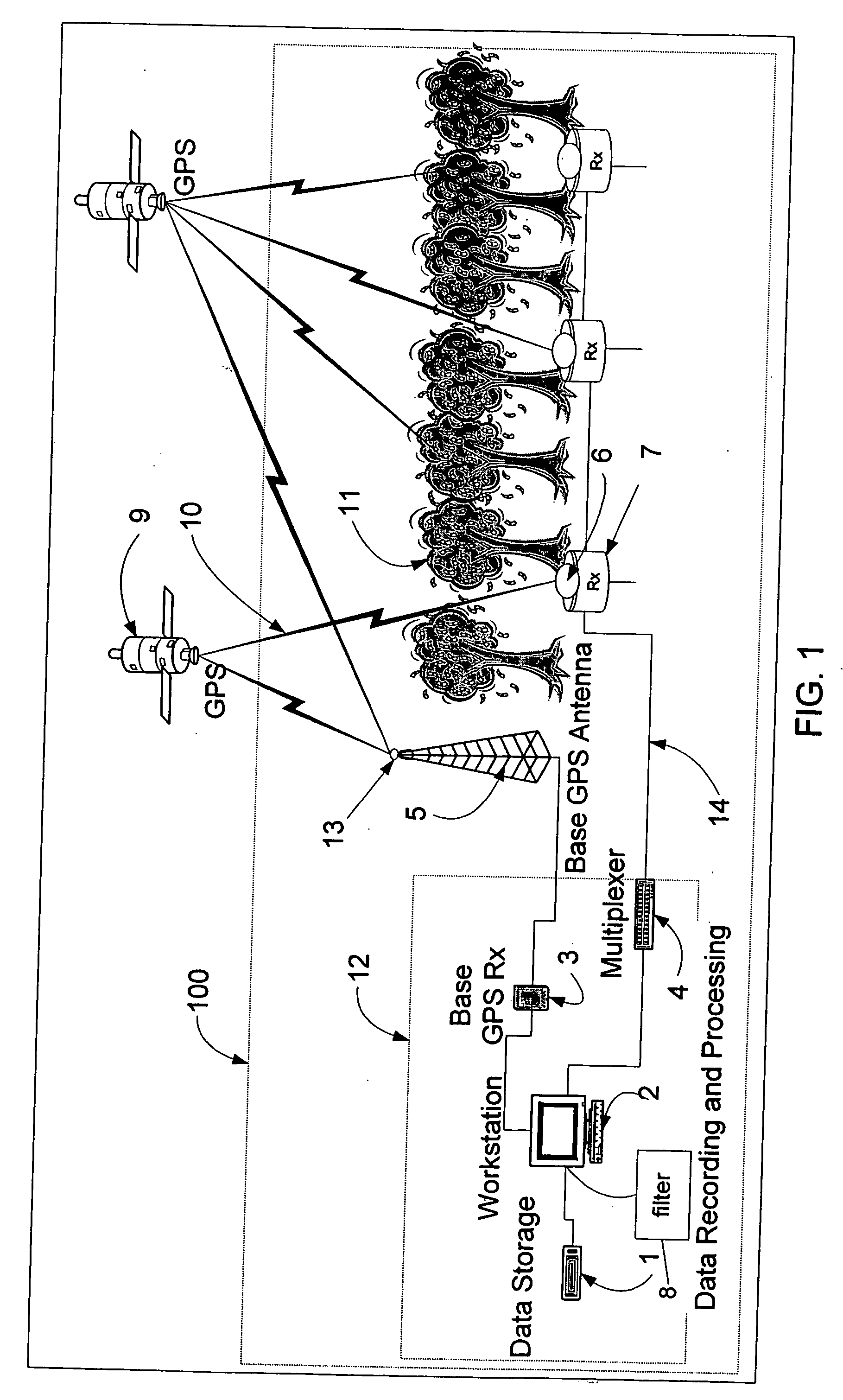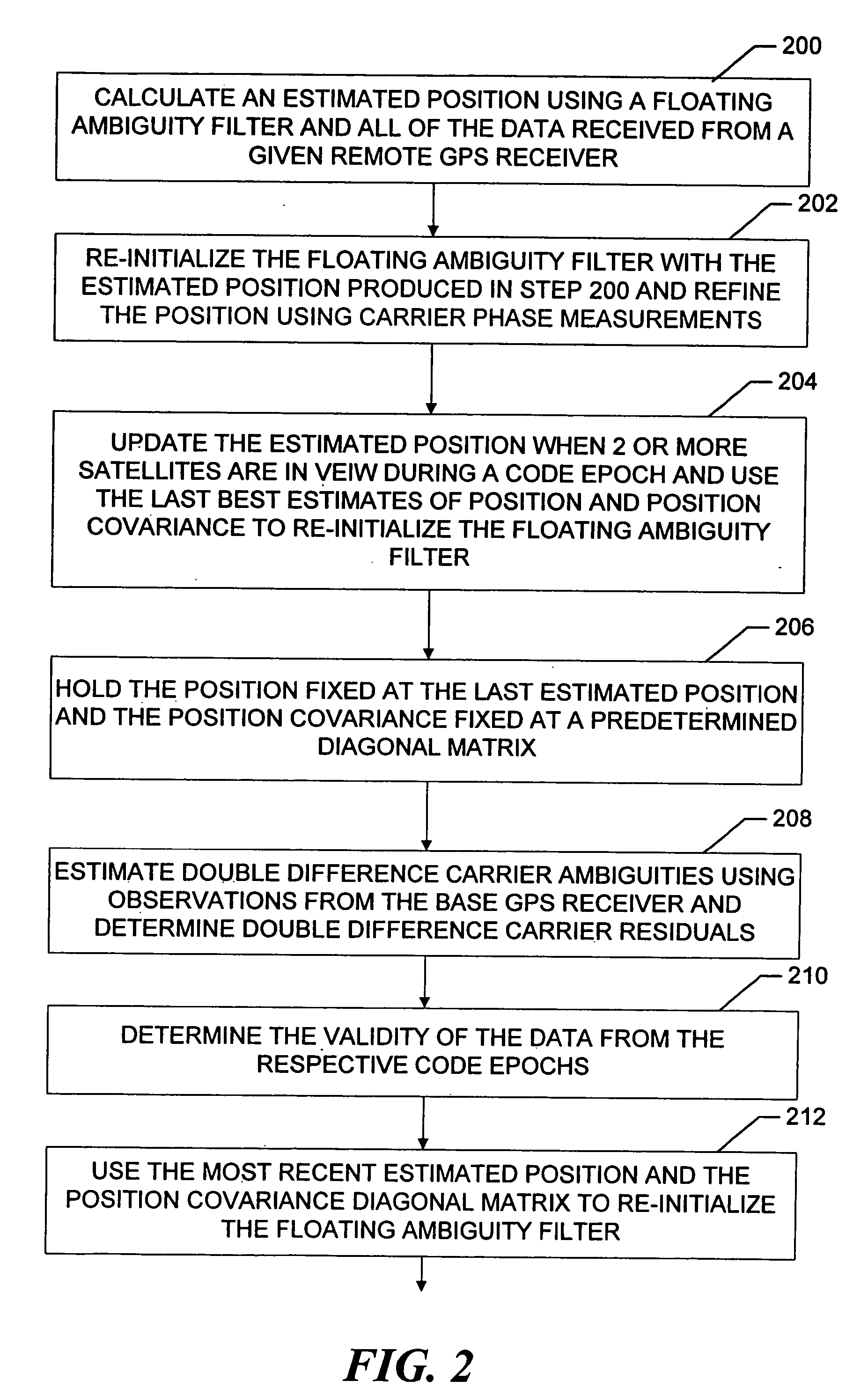Method for positioning using GPS in a restrictive coverage environment
a technology of restrictive coverage and gps, applied in the field of gps receivers operating in restrictive coverage environments, can solve the problem of adversely affecting accuracy by the overall quality of range data
- Summary
- Abstract
- Description
- Claims
- Application Information
AI Technical Summary
Benefits of technology
Problems solved by technology
Method used
Image
Examples
Embodiment Construction
[0018] Referring now to FIG. 1, a positioning system 100 includes a plurality of GPS receivers 6 that supply range information, that is, pseudoranges and carrier measurements, to a data recording and control center 12 through signal receivers 7 that are located in selected locations over a site of interest. The signal receivers 7 are connected to the center by cables 14. The center 12 includes one or more workstations 2 and data storage devices 1 that retain and process the range information. The signals from various cables 14 (only one of which is shown in the drawing) are supplied to the one or more workstations 2 through a multiplexer 4, which operates in a conventional manner. The GPS receivers 6 are sometimes referred to herein as “remote receivers.”
[0019] The data recording and control center 12 further includes a base GPS receiver 3 that receives signals from various GPS satellites 9 using a base GPS antenna 13, which is positioned to have a clear view of the sky. An elevated...
PUM
 Login to View More
Login to View More Abstract
Description
Claims
Application Information
 Login to View More
Login to View More - R&D
- Intellectual Property
- Life Sciences
- Materials
- Tech Scout
- Unparalleled Data Quality
- Higher Quality Content
- 60% Fewer Hallucinations
Browse by: Latest US Patents, China's latest patents, Technical Efficacy Thesaurus, Application Domain, Technology Topic, Popular Technical Reports.
© 2025 PatSnap. All rights reserved.Legal|Privacy policy|Modern Slavery Act Transparency Statement|Sitemap|About US| Contact US: help@patsnap.com



